I went to the Palazzo Grassi to find junk and found lots of it –and less. An unfinished piece of wall. A burlap scrim over a window. A mirror placed at an angle. A wastepaper basket made from bronze. It turns out that it takes even less for Tatiana Trouvé to make art than I thought. I was familiar with her assemblages of wire, discarded clothing, and plywood, all cast in bronze, and knew of her minimalist incisions into gallery structures.
What I wasn’t expecting was gallery after gallery of not only detritus turned through alchemy into art, but how much of the spaces and surfaces in this grand old former palace turned art museum could be art as well.
Found Materials and Urban Debris as Sculpture
Trouvé is an Italian-born artist living in Paris. Her practice is varied, but almost all her techniques and series have an attitude in common: she starts from aspect of the reality around her that we might not consider of high value, beauty, or importance and turns them into objects we contemplate and enjoy as art.
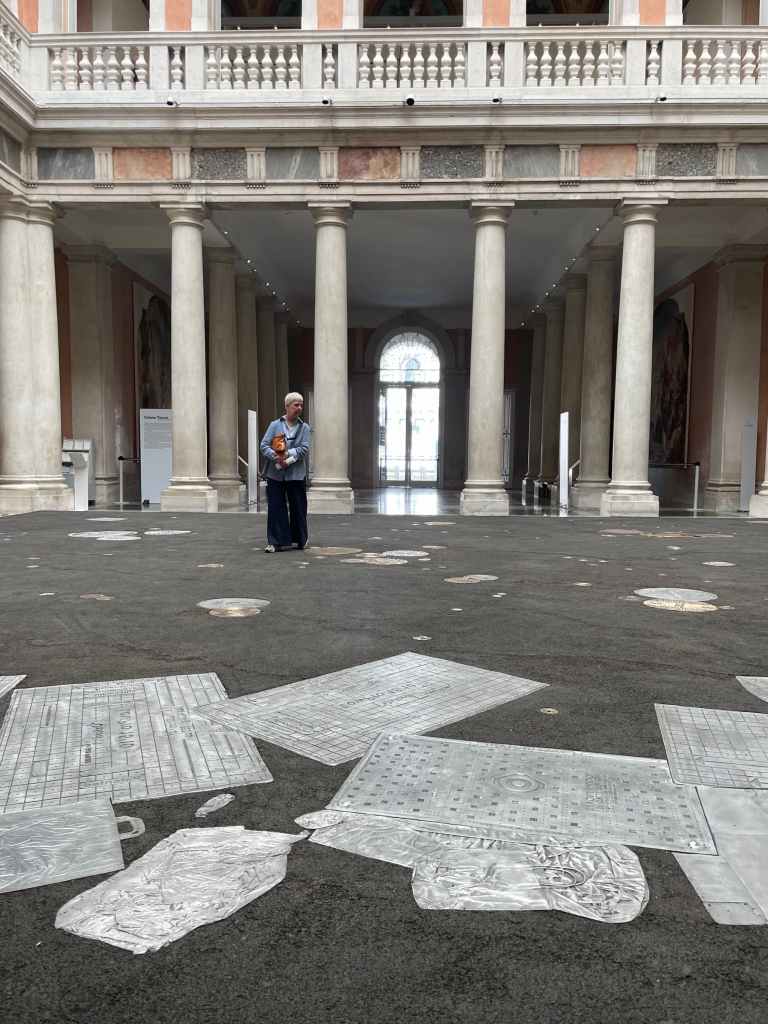
The raw material can consist of pieces of trash or left-over implements she finds on her walks around whatever city she is visiting. Sometimes she becomes fascinated by piles of clothes or pieces of string. Manhole or drainage covers fascinate her, and she has replicated a dozen of them and strewn them around the floor of the Grassi’s central atrium.
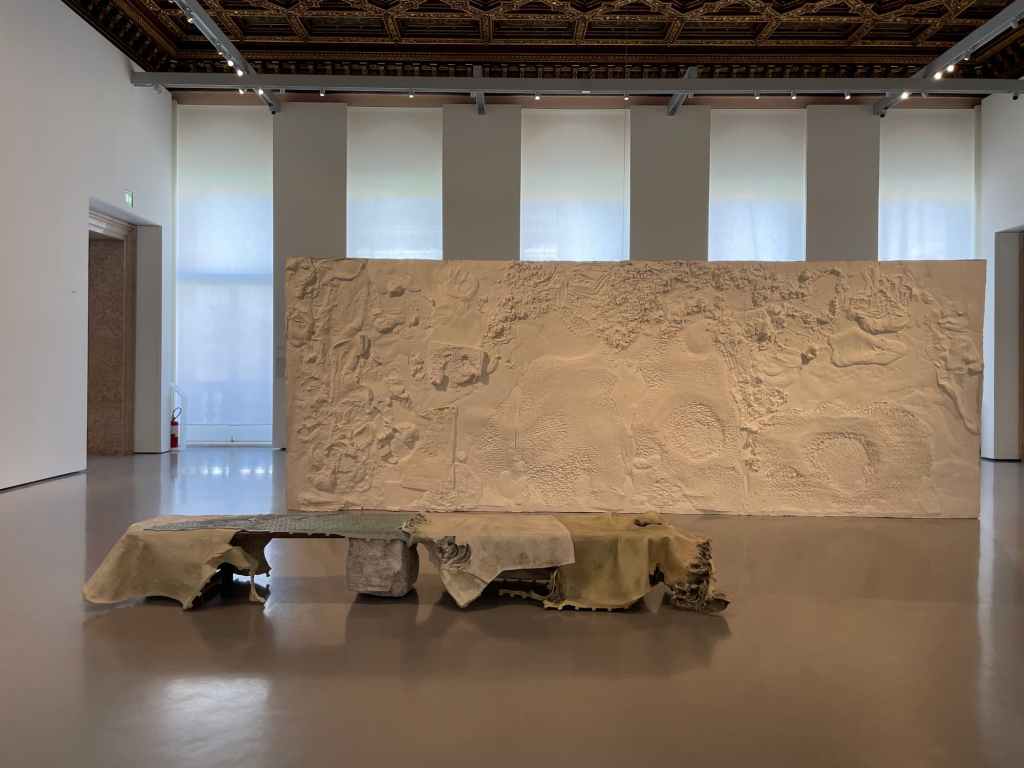
After she focused on retrieved these pieces (we don’t know how, or with what permission), Trouvé transforms them not through the usual artistic means of interpretation, representation, or abstraction, but by changing their site or their material. What was dirty detritus becomes bronze or another material more proper to the realm of art. She composed disparate pieces together, so that cardboard, textile, and metal string together make an assemblage that is all poured from the same material.
The original nature of these piles and fragments is visible because Trouvé brings out their textures and colors in the bronze finish, but there is also a monolithic and even monumental quality –a sense that these are pieces of sculpture– about the finished compositions.
Plaster Works and Monumental Minimalism
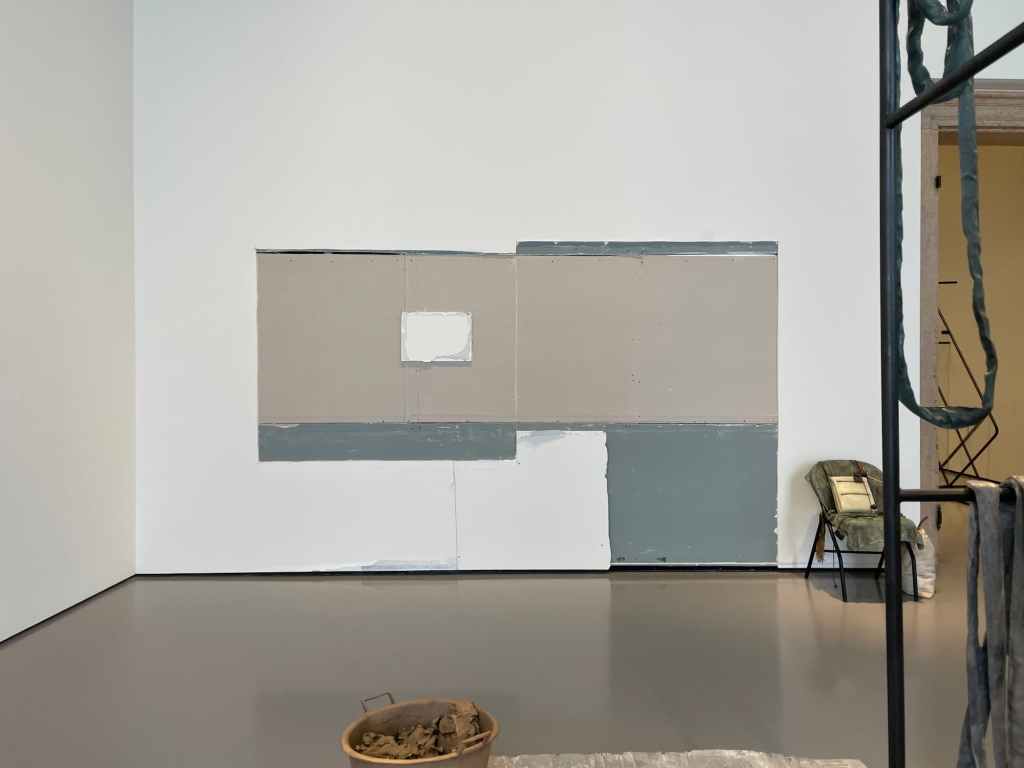
Sometimes Trouvé works with raw plaster, creating a three-dimensional and messier version of a Giorgio Morandi collection of houseware or turning a plane that you expect to be smoothed in preparation for it to be a background into a landscape of swirls and twirls. Anything can become something expressive in Trouvé’s hands. The transformation of material, the flip from background to foreground, and the monumentalization of the ordinary are at the heart of what she does.
Spatial Illusions and Miniature Architecture
Trouvé doesn’t just work with trash, though that is what she has become most well-known for. She also plays with make illusions in space. In one room at the Grassi, you encounter a mirror placed at an angle to the walls. It leads your eye to a smaller plane of glass set into the surface.
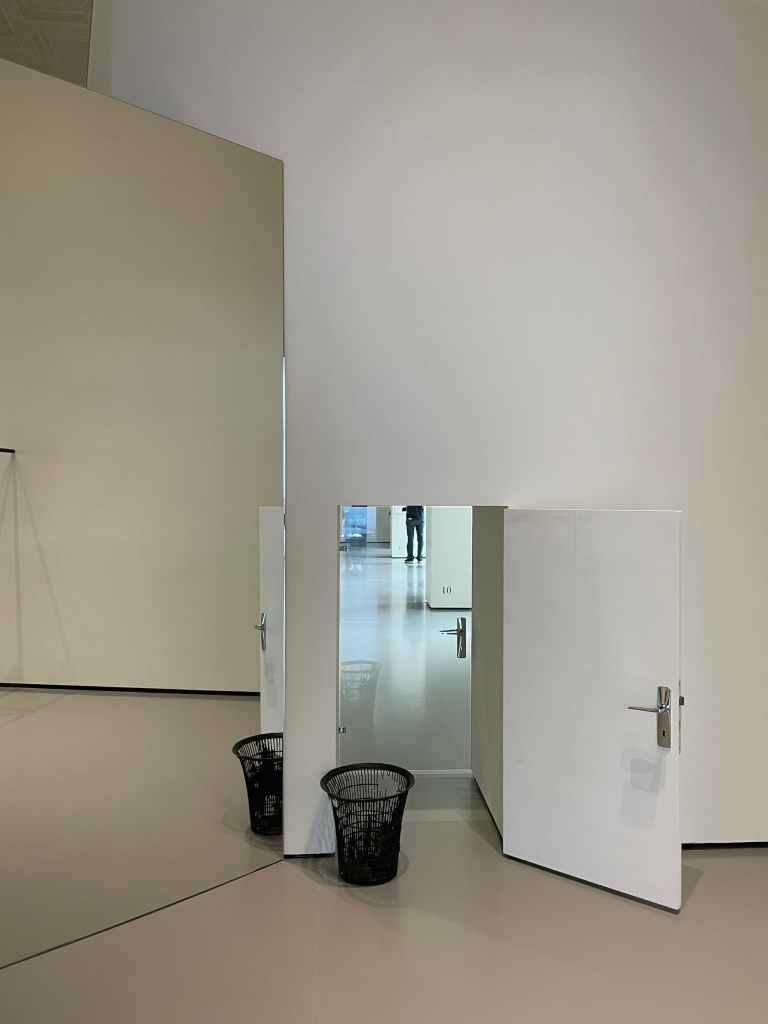
A door at the size of a child, complete with a scaled down handle and lock, invites you to look through what you think is a view into another space, one which seems artificial and strange enough for you to question its reality, that is amputated by the cut-off of the dollhouse scale.
Deconstructing the Gallery Space
Then there are the walls and windows on which the artist operates with minimal means. She will take away the final or top layers of a wall that has been finished to gallery specifications, revealing the slapdash paint or assembly of drywall (or its Italian equivalent). What was hidden and unfinished then becomes the basis of a composition the artist does not build up or construct, but incises out of what is there.
The Poetics of Burlap, Light, and Paint
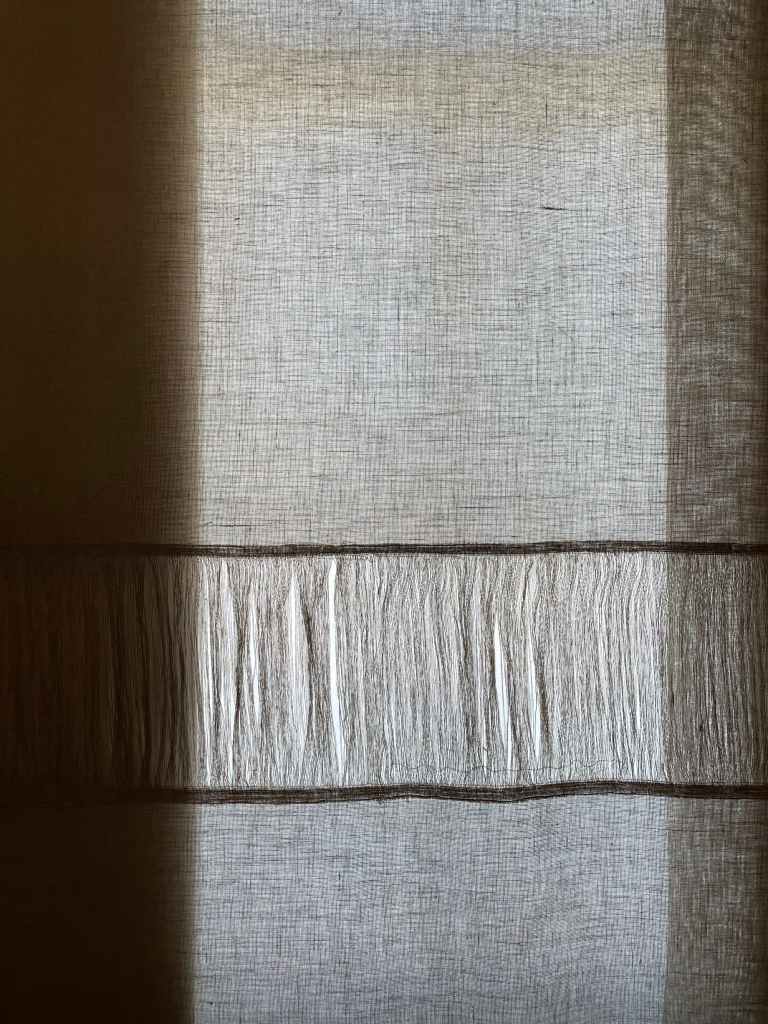
When Trouvé stretches burlap over the windows and walls of the upstairs gallery at the Grassi, she turns the inner façade into a reduction of light and dark. By painting the wall around it and the floor in front of the construction a similar color brown, she further elides edges. She then brushes the material with light and broad strokes of white paint, making the whole oscillate further between light and dark and scrim and object. In one case, she pries apart the fabric to create a zipper between top and bottom.
When the Exhibition Goes Too Far
As is the case with most exhibitions at the Grassi, in my experience, the Tatiana Trouvé show goes on too far. On the third floor I found myself trudging through rooms of drawings, artworks that seemed less thought-out than the ones I describe above and displays of the artist’s source material that seemed self-indulgent. I know process is fascinating, but I have a bias towards the finished object –even if, or especially because, it is in this exhibition often seemingly unfinished.
Alchemy, Abjection, and Artistic Mastery
What makes the Trouvé exhibition, which up until April next year, worth visiting is the sheer power of the alchemy on display in the best works. You can marvel at the skill on display both in how she fabricates the finished objects and in how she composed them, and you can also find yourself astonished at how she can create effects that make you stare and wonder using almost nothing.
You can also delight in the fact that she has taken exactly what we do not usually value –trash, detritus, the parts of walls we are not supposed to see, or what in art theory is called “the abject”—and used it to make beauty. Above all else, you can just enjoy the art she has made, no matter what its base material is or what actions Trouvé has taken, because she is such a skillful maker.
Few exhibitions I have seen in the last few years have delighted me more, and few have strengthened me more in the belief that, within the wonders we as human beings have over time made already, from grand structures such as the Palazzo Grassi and the Venice in which it is located, to the myriad forms and images that surround us in everyday life, we should look for the potential for meaning, value, and beauty that is already there.
The work of art, architecture, and design is seeing what is there and transforming it into the new that is recognizable while opening up new spaces within what we know. Tatiana Trouvé does this better than almost anyone I know working today.
Read more: The latest from columnist Aaron Betsky includes reviews of: Osaka Expo | Teamlab | the Venice Biennale of Architecture | On Michael Graves | On Censorship or Caution? | Uniformity in Architecture | Book on Frank Israel | Legacy of Ric Scofidio| Fredrik Jonsson and Liam Young | DSR’s New Book | the Stupinigi Palace | Living in a Diagram | Bruce Goff | Biopartners 5 |Handshake Urbanism | the MONA | Elon Musk’s Space X | AMAA | DIGSAU | Art Biennales | B+ | William Morris’s Red House | Dhaka | Marlon Blackwell’s new mixed-use development | Eric Höweler’s social media posts,| Peter Braithwaite’s architecture in Nova Scotia,| Powerhouse Arts, | the Mercer Museum, | and MoMA’s Ed Ruscha exhibition.
Keep the conversation going—sign up to our newsletter for exclusive content and updates. Sign up for free.
